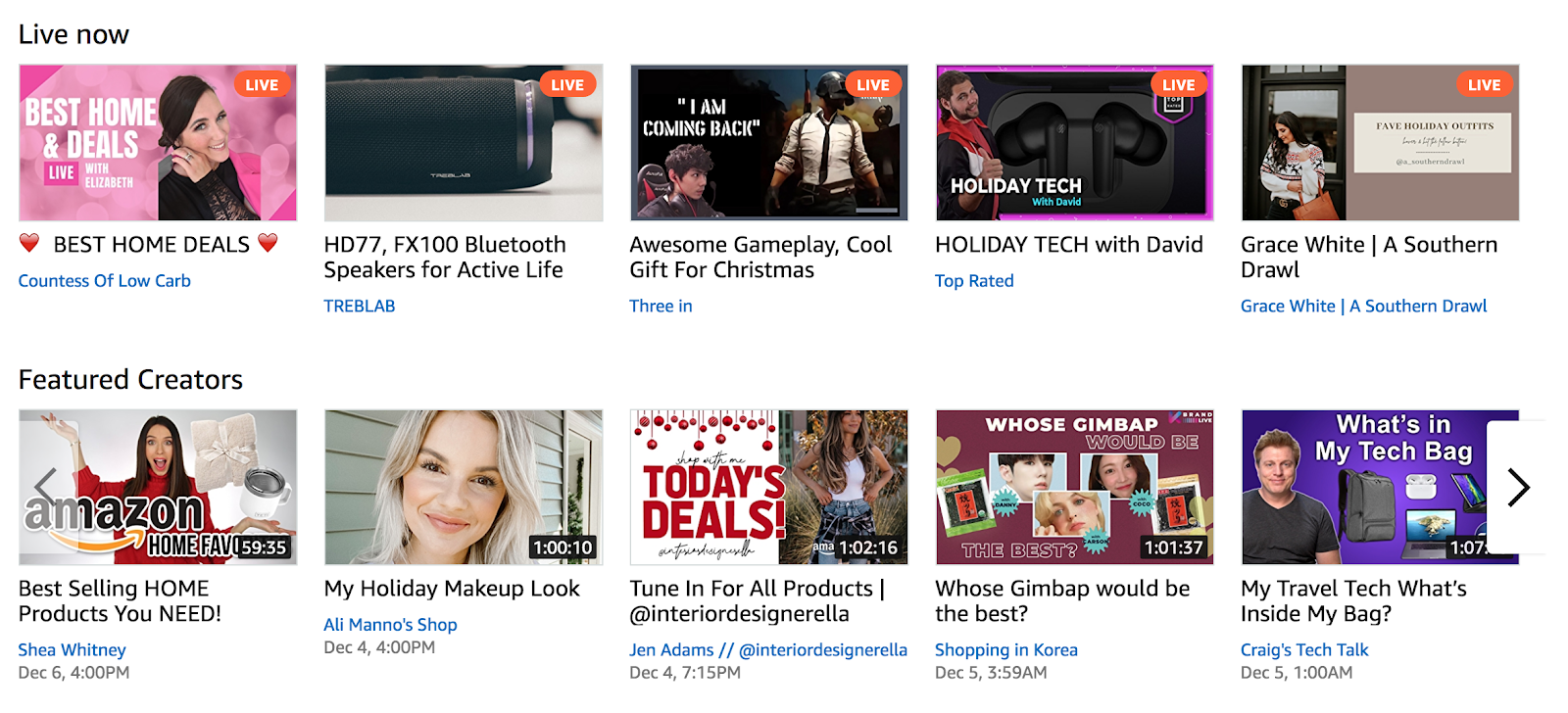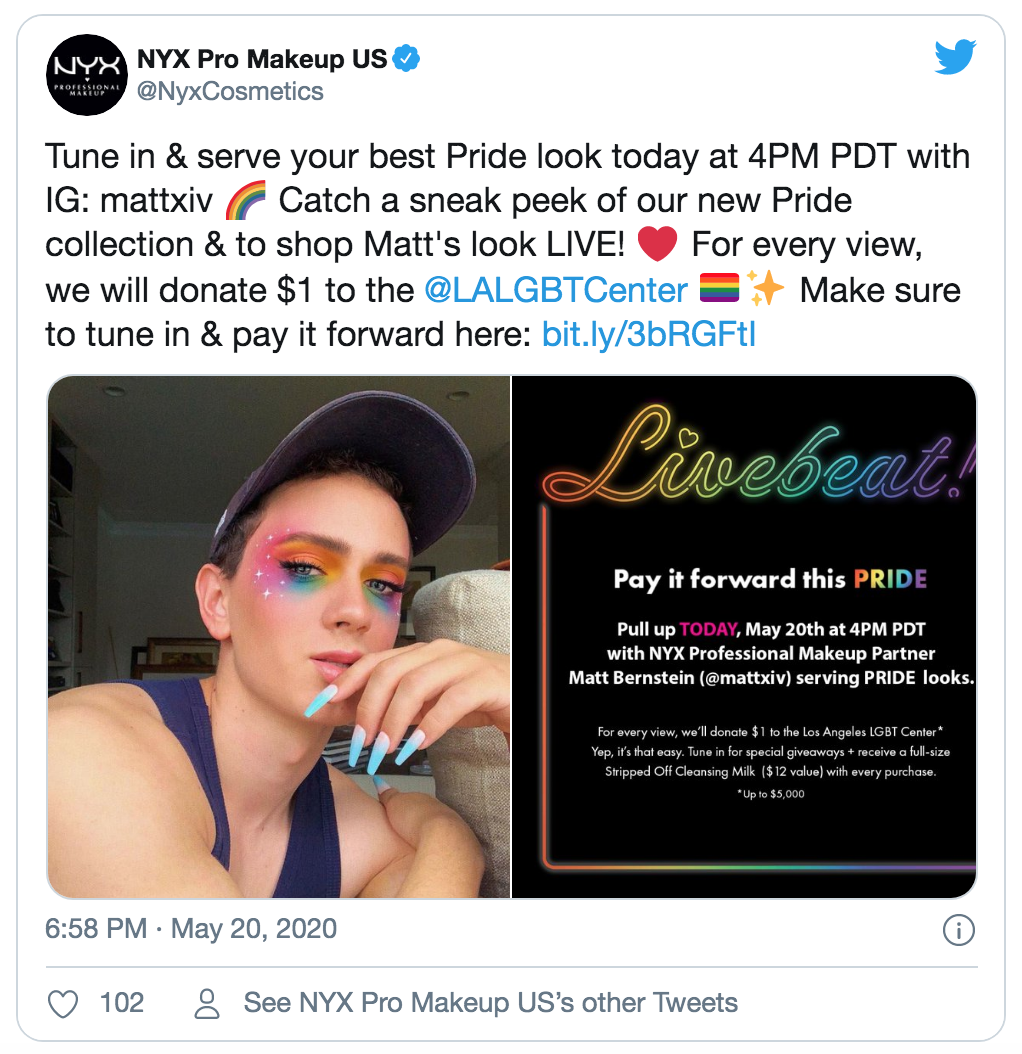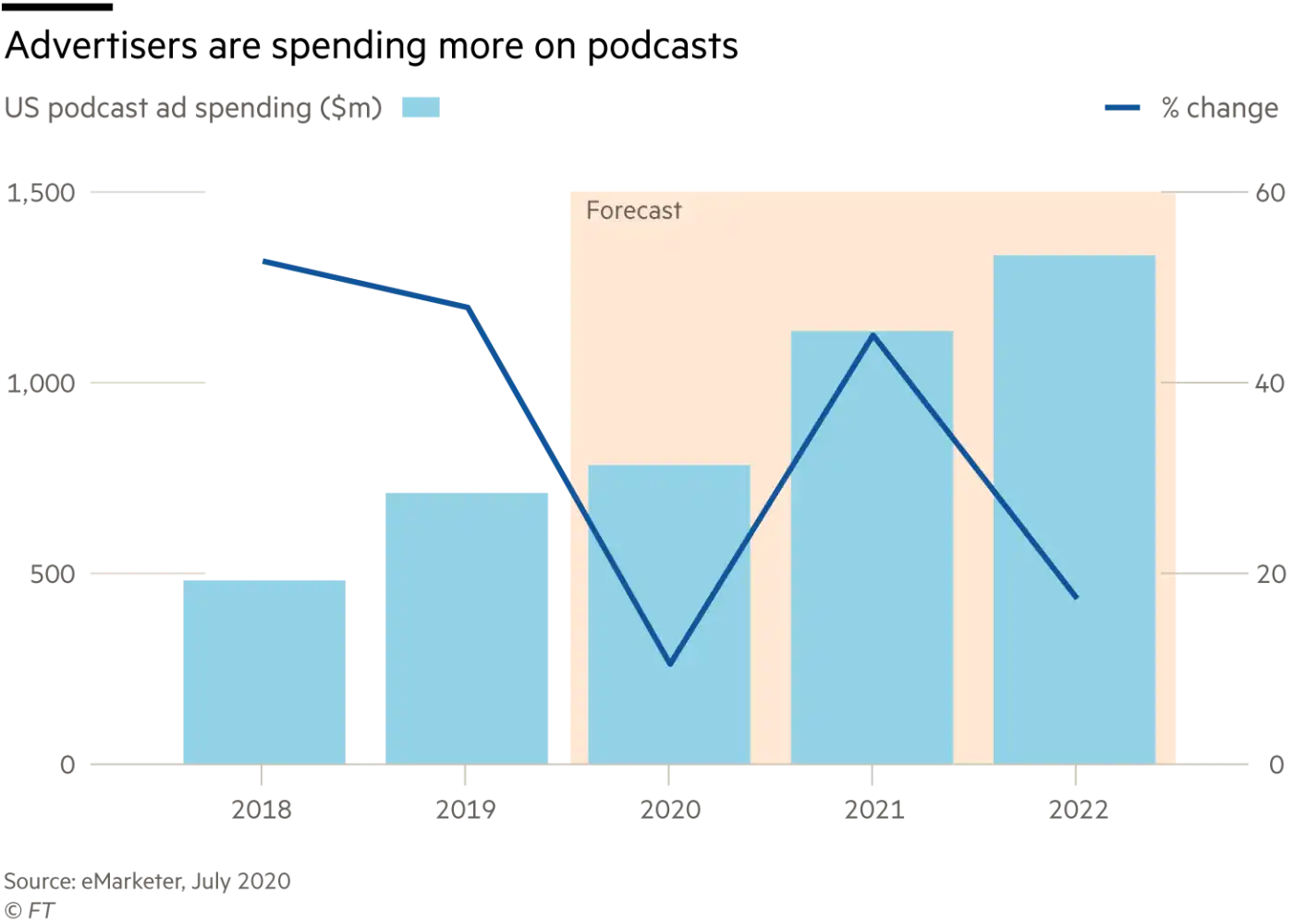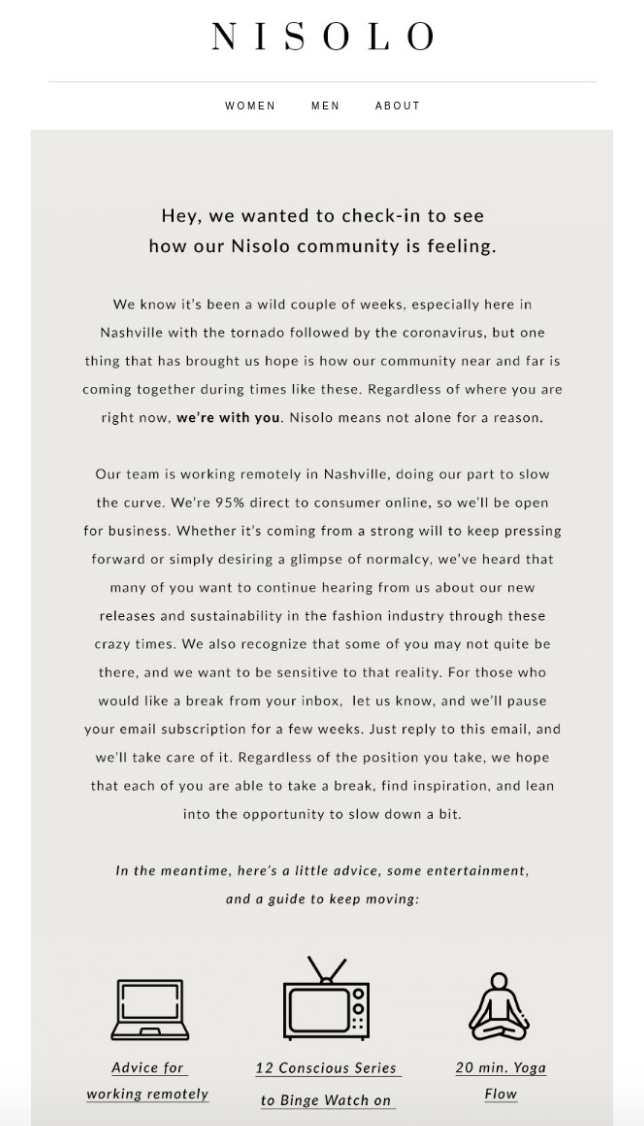Digital Marketing Trends of Focus for 2021
Digital Marketing Trends of Focus for 2021
After the chaos of 2020 now behind us, it’s time to look ahead to what we can expect from the next 12 months in the . 2020 was unpredictable, to say the least. That meant that while some of the trends which were predicted pre-pandemic did end up coming to light, others didn’t emerge at all, with various forced adaptations reshaping elements of the marketing landscape. Most notably, eCommerce sales went through the roof, people spent a lot more time on social media, and video conferencing became the norm. This has led to a major shift in the way brands connect with their consumers. So, as we turn a corner into the New Year, what digital marketing trends will continue to permeate in 2021? Here are some key trends to consider:

Live-streams and an increase in influencer content
Stay at home orders meant events were canceled, and consumers were unable to attend in-person events. They weren’t even able to socialize with their friends and family. So why would this be considered in regards to digital marketing trends?
This led to an uptick in the number of people tuning into live-streams, whether it was a branded live-stream, a live video from their favorite celebrity, or an online workshop.
On Facebook, live viewings spiked by 50% during lockdown periods, while viewings on Instagram surged 70%. TikTok use shot up in 2020, and there’s a good chance we’ll see this upward trajectory continue to play out in 2021.
Human-drive content like influencer live-streams can create trust, and tap into the ‘in-the-moment’ connection that 2020 consumers crave.
Amazon Live really got going during the pandemic. Influencers took to the platform to promote their favorite products during live events. What’s more, the livestreams were shoppable, which meant viewers could make purchases while they were watching.


Stay at home orders meant events were canceled, and consumers were unable to attend in-person events. They weren’t even able to socialize with their friends and family.
This led to an uptick in the number of people tuning into live-streams, whether it was a branded live-stream, a live video from their favorite celebrity, or an online workshop.
On Facebook, live viewings spiked by 50% during lockdown periods, while viewings on Instagram surged 70%. TikTok use shot up in 2020, and there’s a good chance we’ll see this upward trajectory continue to play out in 2021.
Human-drive content like influencer live-streams can create trust, and tap into the ‘in-the-moment’ connection that 2020 consumers crave.
Amazon Live really got going during the pandemic. Influencers took to the platform to promote their favorite products during live events. What’s more, the livestreams were shoppable, which meant viewers could make purchases while they were watching.

More goodwill and purpose-driven missions from brands
The 2021 Hootsuite Social Trends report notes that:
“The smartest brands will understand where they fit into customers’ lives on social media, and they’ll find creative ways of fitting into the conversation.”
At the core of digital marketing trends, specifically this one is the need for transparency.
It’s impossible for consumers to connect with brands that they see as ‘shady’ or insincere. Why would they want to invest in something that they can’t trust or don’t believe in? This is why connection will be pivotal for brands that want to remain trusted sources in 2021.
Now more than ever, brands are having to dig deep to find out how to flourish in turbulent times. A report from Deloitte states that, to do this, brands need to “be deeply attuned to why they exist and who they are built to serve”.
We’re no strangers to seeing brands doing good things, but there will be an even bigger emphasis on this next year.
We’ll see more brands running campaigns like Hilton’s #HotelsForHeroes, where they gave away free rooms to medical workers, or Chanel’s contribution to the pandemic where they tasked their seamstresses with making face masks.

UGC to enhance the customer experience
Customer experience has never been more important.
Consumers crave enjoyable experiences with brands that are easy and memorable. They want proof before they buy and they want to be reassured – after all, no one wants to make the wrong decision.
User-generated content (UGC) ticks all the boxes when it comes to connective content:
- It builds and strengthens communities
- It’s relatable and uplifting
- It enables brands to meet customers where they’re already hanging out
- It helps brands generate tons more content against a backdrop of stay-at-home orders and restrictive measures
UGC has long been an effective way for brands to forge relationships with their customers and provide social proof, and this will be a common theme and digital marketing trend in 2021 as well.

An emphasis on sustainability
81% of consumers strongly feel that companies should help improve the environment. Why should you consider this when thinking about digital marketing trends?
It’s a number that’s not that surprising. Over the past couple of years we’ve seen a shift in brands moving towards a more sustainable future, whether it’s through the materials they use, the packaging, their systems, or something else.
The hunt for a greener planet continues, and consumers are actively seeking out brands that are purpose-driven and conscious about the environment. As the world remains a fragile place, it will be key for brands to reiterate their sustainability in 2021.
The Ocean Cleanup is a great example of a brand that’s done this well. In late October, they presented their first product made solely from plastic collected from the Great Pacific Garbage Patch.
They used TINT to share the announcement, which outlined how the brand will continue to use recycled products from the ocean to create beautiful, sustainable products. In a full circle turn of events, the revenue generated from the products will be pumped back into the brand’s cleanup campaign.

Inclusivity will be key
Inclusivity also became a bigger focus in 2020, with the Black Lives Matter movement highlighting endemic issues that linger within various elements of society.
A study by Accenture shows that the cultural shift towards inclusivity is also impacting purchase behavior, with 41% of shoppers shifting away from retailers which don’t reflect their views on identity and diversity – and 29% are willing to switch brands completely if they don’t show enough diversity.
Brands that are seen to be non-inclusive, or who don’t appear to be a part of the inclusivity conversation, will likely see impacts in 2021. On the flipside, brands which openly showcase their involvement in inclusive causes, will reap the benefits and drive deeper connections with their buyers. Key factor to consider in your strategy? Yes, as is a digital marketing trend that is here to stay.

Increase in voice and visual search
An increasing number of consumers are searching via voice-activated tools like Alexa. Perhaps that’s due to people have been stuck at home, with limited opportunities for conversation, or perhaps it’s simply because this type of technology is more readily available (about one in four American homes has a smart speaker of some kind).
But it’s not just voice search that will prevail in 2021 – we can also expect other creative search methods to rise to the top, like visual search.
Tools like Google Lens enable consumers can search for whatever they can see. This means marketers will need to focus even more on image alt-text and sitemaps for images. Over the next year, visuals will become increasingly important in the SEO game.
It’s going to be profitable too: Retail Customer Experience estimates that by 2021:
“Early adopters that redesign their websites to support visual and voice search will increase their digital commerce revenue by 30%.”

Easy-to-consume content
2020 also saw people leaning on easy-to-consume content – things like podcasts that can be consumed on-the-go or newsletters that land directly in subscriber’s inboxes.
Studies show that 55% of Americans now listen to podcasts, while newsletter mentions were up 14% during lockdown.


Advertisers are spending more on podcasts too, which is a hint to their continued success in 2021.
Convenient and readily-available content like podcasts and newsletters will help brands connect more deeply with customers and provide a more intimate way to stay in touch.
Take a leaf out of Nisolo’s book. They used their newsletter to connect with customers and check in with them, before providing relevant resources that might help them in turbulent times.
Are you ready for 2021?
The unpredictable nature of 2020 has forced brands to think long and hard about how they connect with their customers. Shop closures and stay-at-home orders meant people were stuck inside, which also meant that they were spending a lot more time online. This has pushed brands to branch out and create more human-centric ways of reaching their buyers.
Over the next 12 months, we’ll see this continue and more digital marketing trends evolving. Live-streams will become increasingly common, purpose-driven brands that champion sustainability will rise to the top, and UGC will remain an integral part of every marketing strategy.
Goodbye and good riddance to 2020. The global pandemic had an impact on every business. From a digital marketing standpoint, what will 2021 bring? Several digital marketing trends leaders shared their thoughts on coming trends.
Teddy Heidt, Founder of The Gauge Collective, offered this prediction:
Digital business pivots may become permanent. “Virtual Events and Experiences for audiences to engage outside of your traditional sales messaging. We helped Mariano’s launch Mariano’s Meet-Ups, Virtual Events spanning Chef Demos, Mixology Classes, and Live Music, and Tricoci market Virtual Consultations for at home treatments. Diversify your social media activity to connect with more engaged users. To that point, enrich the user experience on your social profiles by leveraging shop and other features that break down barriers towards purchasing from you. We helped Tricoci launch Instagram shop to complement their new ecommerce program.”
Social media will become a top channel for purchase, instead of just discovery. “Social media platforms like Facebook are making it easier for consumers to go from discovery to purchase without ever having to leave the platform, creating a simple and seamless path to purchase. With social commerce continuing to grow into 2021, retail brands will have to adapt to these platforms with new rules, similar to what many did with Amazon.”
Sherene Hilal, SVP, product marketing and business operations, Bluecore, predicts:
Informed buyers want to buy from informed brands. “This means evolving even beyond the age of personalization and entering an age of personal commerce, where consumers co-curate their experiences with brands to reflect their preferences at any given moment. They expect for brands to understand what they’ve bought in the past and help them to determine what they should buy next, based on all the data that they’ve consciously shared with them by engaging with their sites and channels. This is not just a matter of brands meeting consumers where they are; it’s about brands telling them what they want, when they want it. If brands and retailers are going to continue collecting first-party shopper data, they will need to begin actioning it in meaningful ways, predicting what their shoppers want to see next, and understanding where shoppers are in their buying cycles to predict when they’ll want to buy.”
Jim Kruger, Chief Marketing Officer, Veeam, offers the following:
Virtual events started out of necessity, but are here to stay because of ROI and accessibility. “In the face of the COVID pandemic, events became virtual out of necessity. As we move into 2021 and beyond, many events will stay virtual not only because of continued safety concerns, but also as a result of lessons learned in 2020. Companies found that by going virtual, they opened up their event to an entirely new audience as virtual events are more accessible than in-person events. For virtual events, visa issues, travel restrictions and costs aren’t as much of a concern as with in-person events, and many companies have found that this allows for higher attendance and more participation. That means lower cost for more people and a higher ROI. The key is to get creative and drive engagement through great speakers, rich content and some fun of course. In 2021 and beyond, virtual events will continue to be a popular route to engage with a broad set of customers as companies see the many benefits of online events.”
Lisa Apolinski, president of 3 Dog Write Inc, who I met when I helped her edit a book, offers these insights:
Culling social media channels. “Many companies are starting to reduce the number of social media channels they are using to share and influence, and rightly so. With so many channels available, and many companies having tried to stay relevant on all of them, the need to declutter is almost pervasive. Reducing social media channels to only the most relevant will be not only popular but necessary.”
Live interactions with virtual events. “Virtual events have great power but not if there is only one-way communication. There is a mistake among many associations and companies that virtual events should be broadcast versus being live. Yes, there are complications that can happen with live events, but the reward is so much greater than the risk. This is what attendees are looking for, something that can substitute, even in part, for a live event.”
Using AR in digital engagement. “With Facebook owning Oculus and dozens of augmented reality patents, it is only a matter of time before digital growth experts have to learn and incorporate AR into digital engagement. This is still on the periphery but now is the time to research, learn and consider how AR could be used in current digital assets.”
awaken your business with daring marketing
digital marketing trends
New Wave Strategic Marketing is a full service marketing agency born and raised in Calgary, Alberta. We are no strangers to drive and ambition, and we are especially passionate about helping our clients reach their digital marketing goals. Driven by our belief that new media and technologies is constantly on the move, changing the way average consumers think, purchase, and choose who they will go to for services. In this age of distraction, our focus is to ignite your organization’s potential, reach your business goals, and to create a loyal community surrounding your brand always working with the latest digital marketing trends.
Ask us about advertising for your business!

